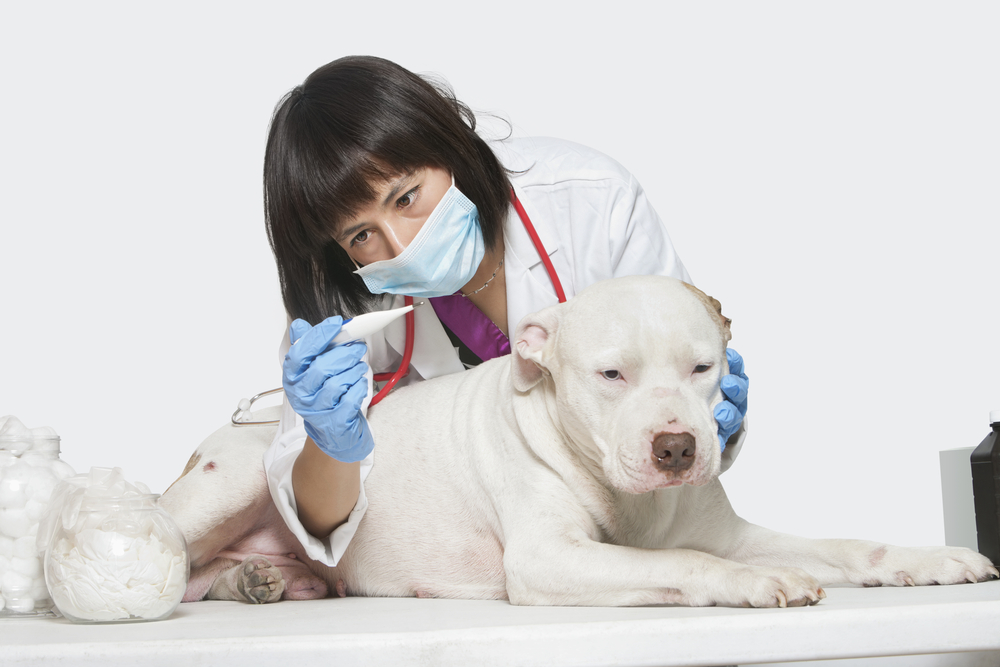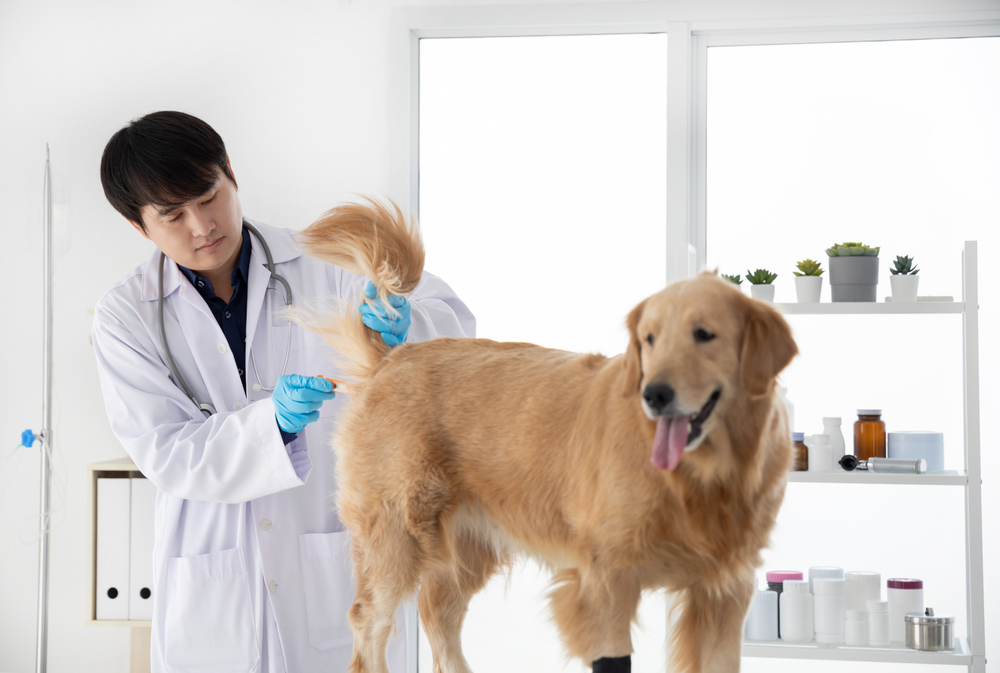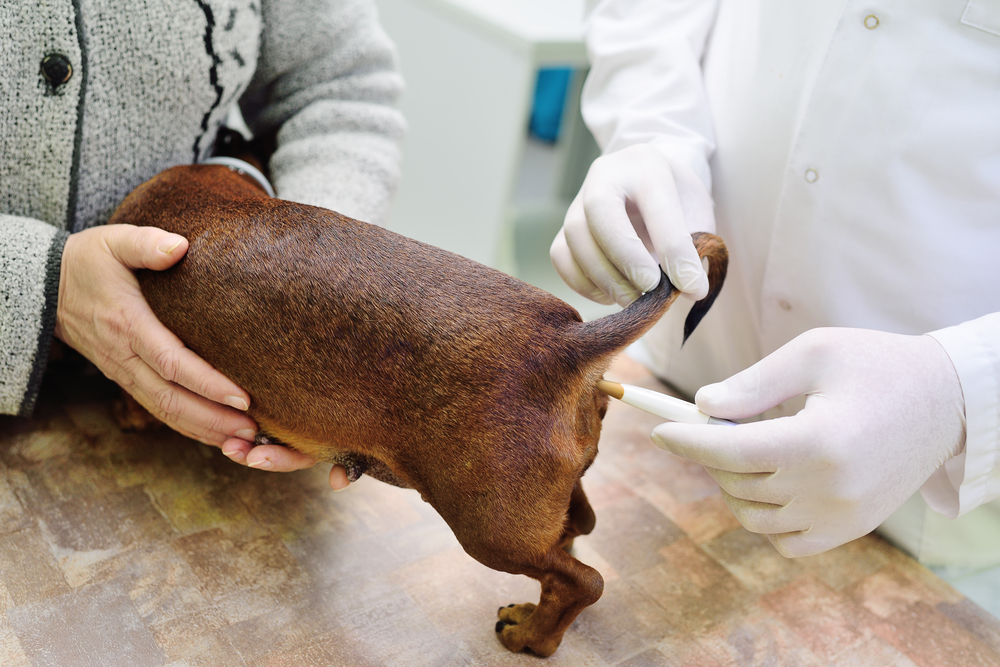In this article
Just like us, dogs can get a fever when they’re feeling out of sorts, but it can be hard to tell exactly whether or not a dog is feverish. So, what can you do?
If you have spoken to a vet and they have recommended that you check for a fever, there are a few things you’ll want to know. In this guide, we’ll explain how to take your dog’s temperature and reveal the kind of thermometer you need to get the most accurate reading possible.
Note: While many people have the ability to check their dog’s temperature at home, it is still advised to speak to a vet before doing so. If the vet does not think this is an appropriate step, it is better (and safer) to have your dog’s temperature checked by a professional.

How to Take a Dog’s Temperature: Step-by-Step
Here, we’ll lay out the steps for taking a dog’s temperature properly. To learn more about what’s considered a normal body temperature for dogs and get some do-or-don’t tips, scroll down to the next sections.
What You’ll Need:
- Dog digital rectal thermometer (Mercury thermometers are not recommended)
- Water-soluble lubricant (alternatives include KY jelly, petroleum gel, Vaseline, or coconut oil)
- An assistant (optional)
Steps
- Get a dog rectal thermometer—these are more likely to give an accurate result.
- Put a water-soluble lubricant or one of the alternative options mentioned above on the thermometer’s tip.
- This is optional, but it may help to have someone on hand to hold and reassure your dog.
- Carefully insert the tip of the thermometer into the anus about 1 inch or so.
- Hold it against the side of the rectal wall to ensure it is not sitting in the middle of feces.
- Wait for the thermometer to beep.
- Read the temperature.


What’s a Normal Body Temperature for Dogs?
While a human’s normal body temperature ranges from 97.6 to 99.6 degrees Fahrenheit, a dog’s normal body temperature falls between 100 and 102.5 degrees Fahrenheit. This can cause confusion for someone taking their dog’s temperature, as they could mistake a perfectly normal temperature for a fever.
A dog is considered to have a fever when their temperature rises to over 103 degrees Fahrenheit, but this doesn’t always indicate a health issue. Stress and overexcitement can cause dogs to have a slightly elevated temperature as well as illness.
Keep in mind that if you have a pregnant dog, knowing their temperature is a way to tell if they are close to labor. A dog about to go into labor (within 24 hours) will have a lower temperature, around 98 to 99 degrees Fahrenheit.
What Causes High Temperature in Dogs?
The causes of fever in dogs can range from mild to serious. Possible causes include:
- Stress
- Excitement/Exercise
- Infections
- Vaccination side effects
- Heat stroke
What About Low Temperatures in Dogs?
Many people think the main reason for taking temperatures is to show an above-average number. However, taking temperatures can also show if a pet has a low temperature, known as hypothermia. Low temperatures do not just result from the dog being in extremely cold environments or getting wet but can indicate illnesses, such as:
- Sepsis
- Hypothyroidism
- Heart failure
- Diabetes
- Severe blood loss
These issues should not be taken lightly, so reach out to a vet if your dog’s temperature is lower than 99 degrees Fahrenheit.

Should My Dog See a Vet?
If your dog’s temperature is only slightly high, but they are acting normally (eating, drinking, going to the bathroom normally, normal energy levels, etc.), it could just be the result of stress or overexcitement. Nevertheless, you should still call a vet to let them know—better safe than sorry.
If your dog is feverish or has a lower-than-normal temperature and shows other signs of illness, they need to be seen by a vet immediately.
- Depression
- Lethargy
- Loss of appetite
- Vomiting
- Shivering
- Nasal discharge
- Coughing
We suggest you contact a vet online if you need urgent veterinary advice.
Did you know you can speak to a veterinarian without having to travel? Just head over to PangoVet. It's our online service where you can talk to a vet online and get the advice you need for your pet — all at an affordable price!


Taking a Dog’s Temperature: Do’s & Don’ts
- Do use a rectal thermometer for dogs to get the best reading.
- Do use a lubricant to make the process a bit more comfortable for your dog.
- Do be gentle when inserting the thermometer.
- Do watch for other signs of illness like lethargy, depression, heavy panting, loss of appetite, excessive drooling, etc.
- Do speak to a vet about your concerns.
- Do act quickly if your dog has a high temperature and is showing signs of illness or heat stroke. See a vet straight away.
- Do clean the thermometer after each use.
- Don’t put your hand on your dog’s forehead to check the temperature—this doesn’t work the same way as it does in humans.
- Don’t wait and see if things improve if your dog is not well. Contact a vet to be on the safe side.
- Don’t try to treat signs of fever by yourself with human medications like ibuprofen or acetaminophen. Follow the vet’s advice.
- Don’t take your dog’s temperature if they are getting scared. They might get defensive and may nip at you.
- Don’t restrain your dog if they are forcibly trying to get away. If you struggle with the dog trying to take their temperature, you could end up hurting them. Plus, the dog could react badly to being hurt. Instead, let a vet do it.

Final Thoughts
We recommend every dog parent get a dog rectal thermometer as this could come in handy one day. While you can try using a forehead or ear thermometer, the reading might not be as accurate as if you were to take the temperature rectally. Knowing what your dog’s temperature is can be a way to determine if further professional action needs to be taken.
See also:
Featured Image Credit: Evgeniy Kalinovskiy, Shutterstock


















